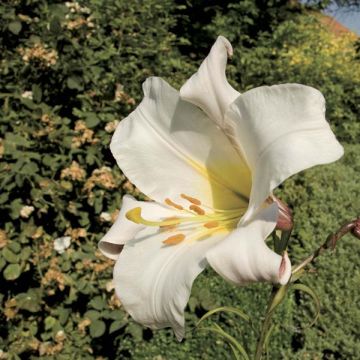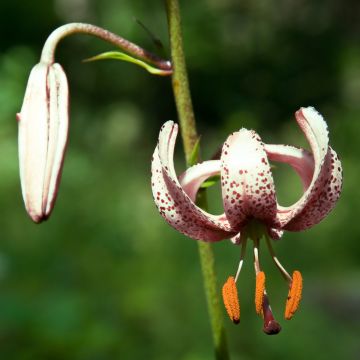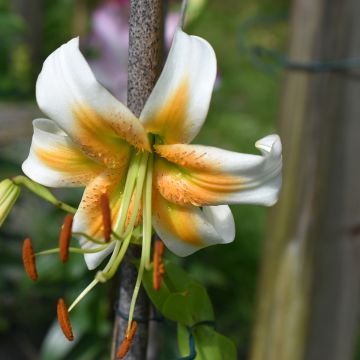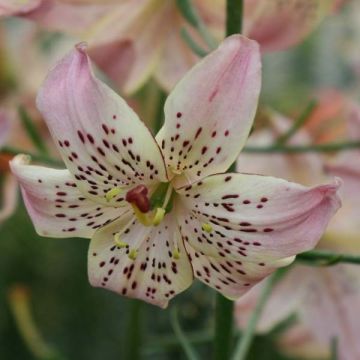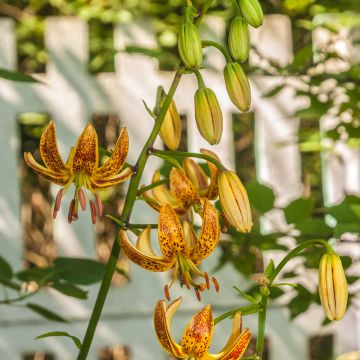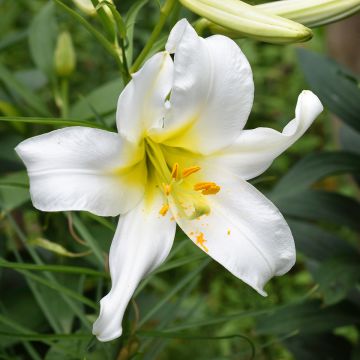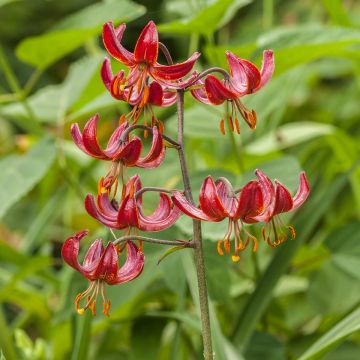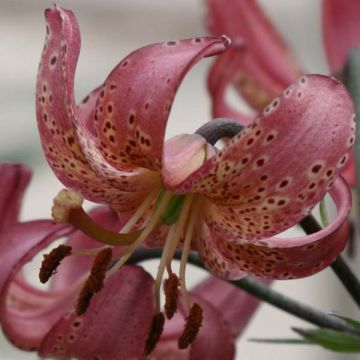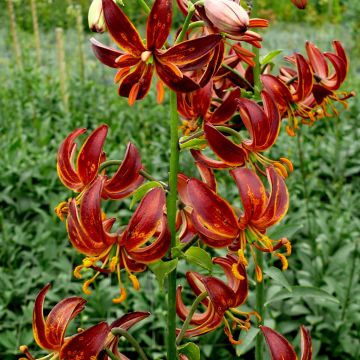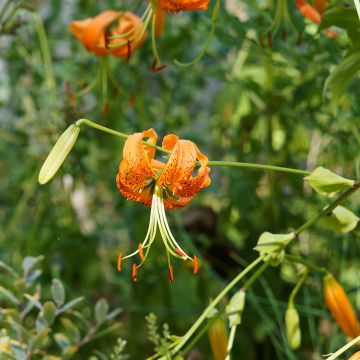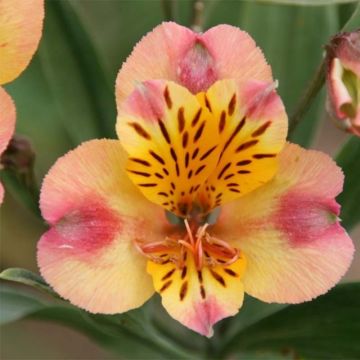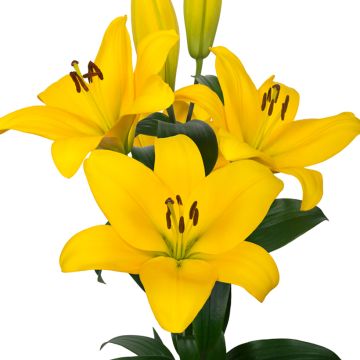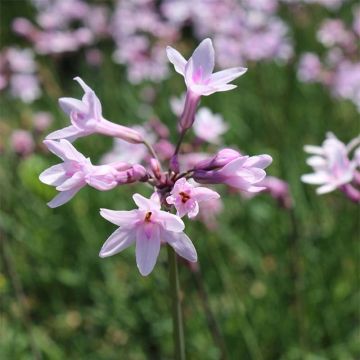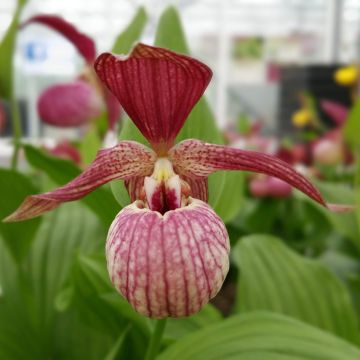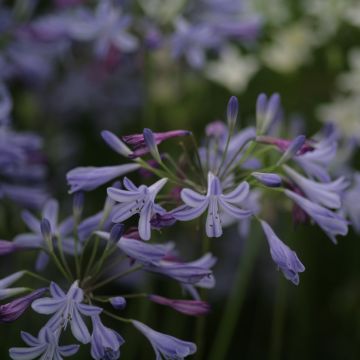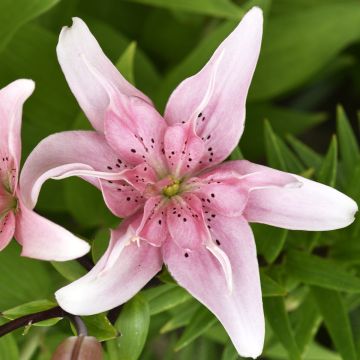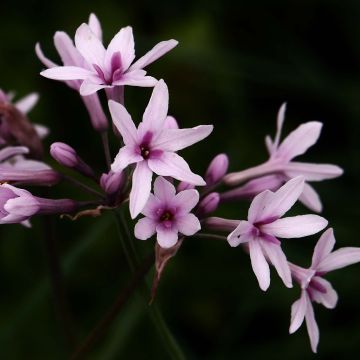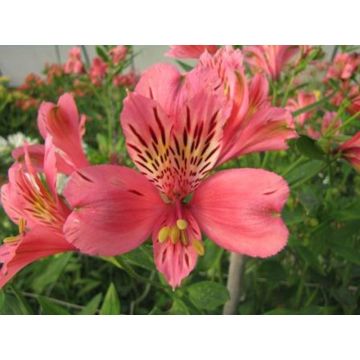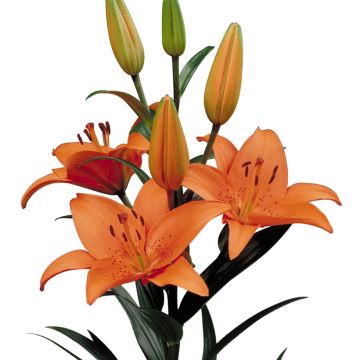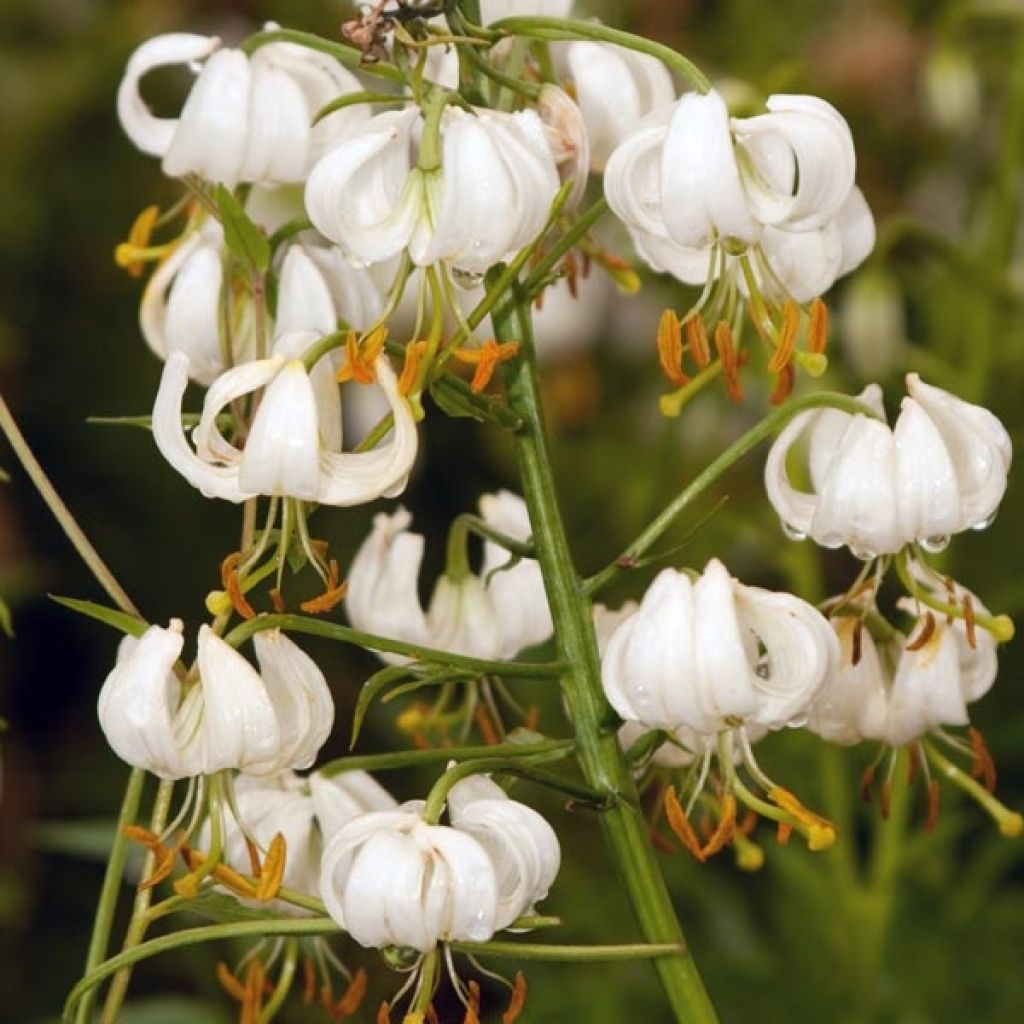

Lis Botanique Martagon Album
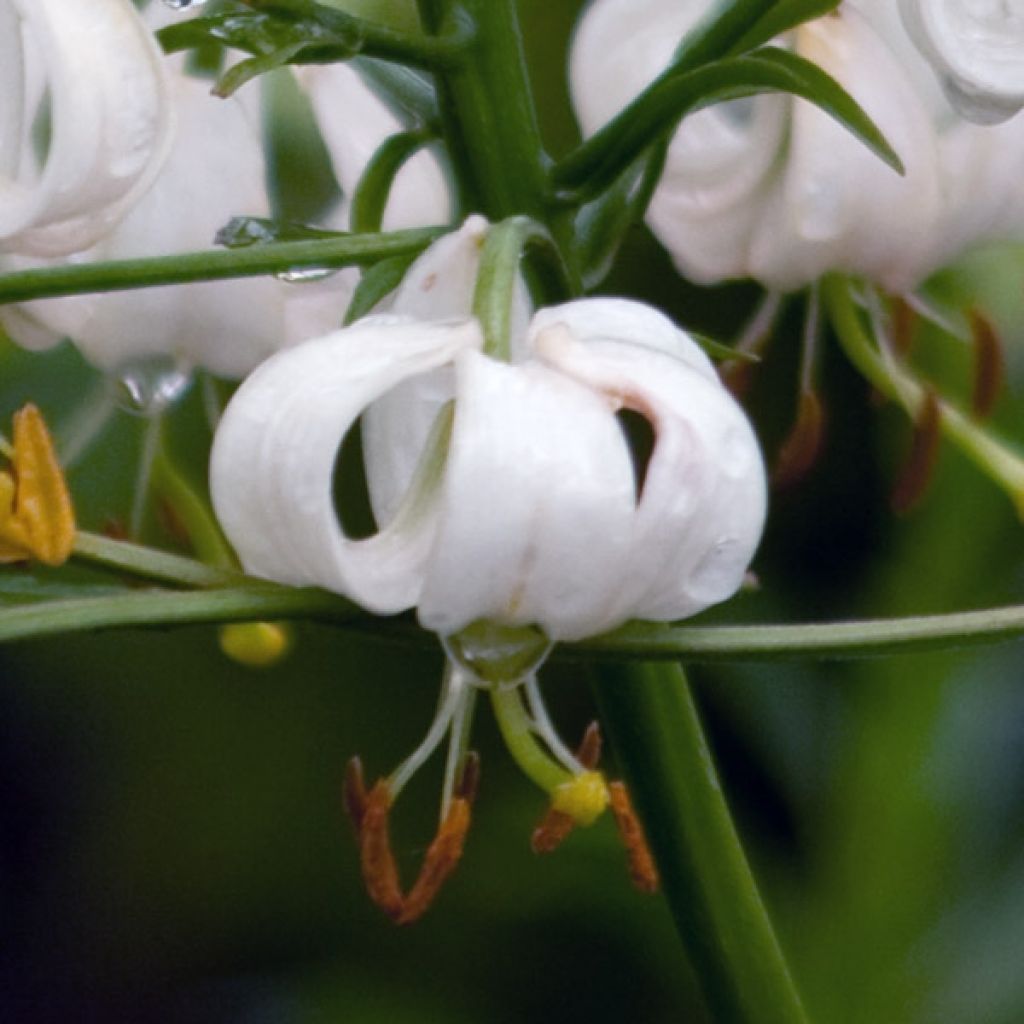

Lis Botanique Martagon Album
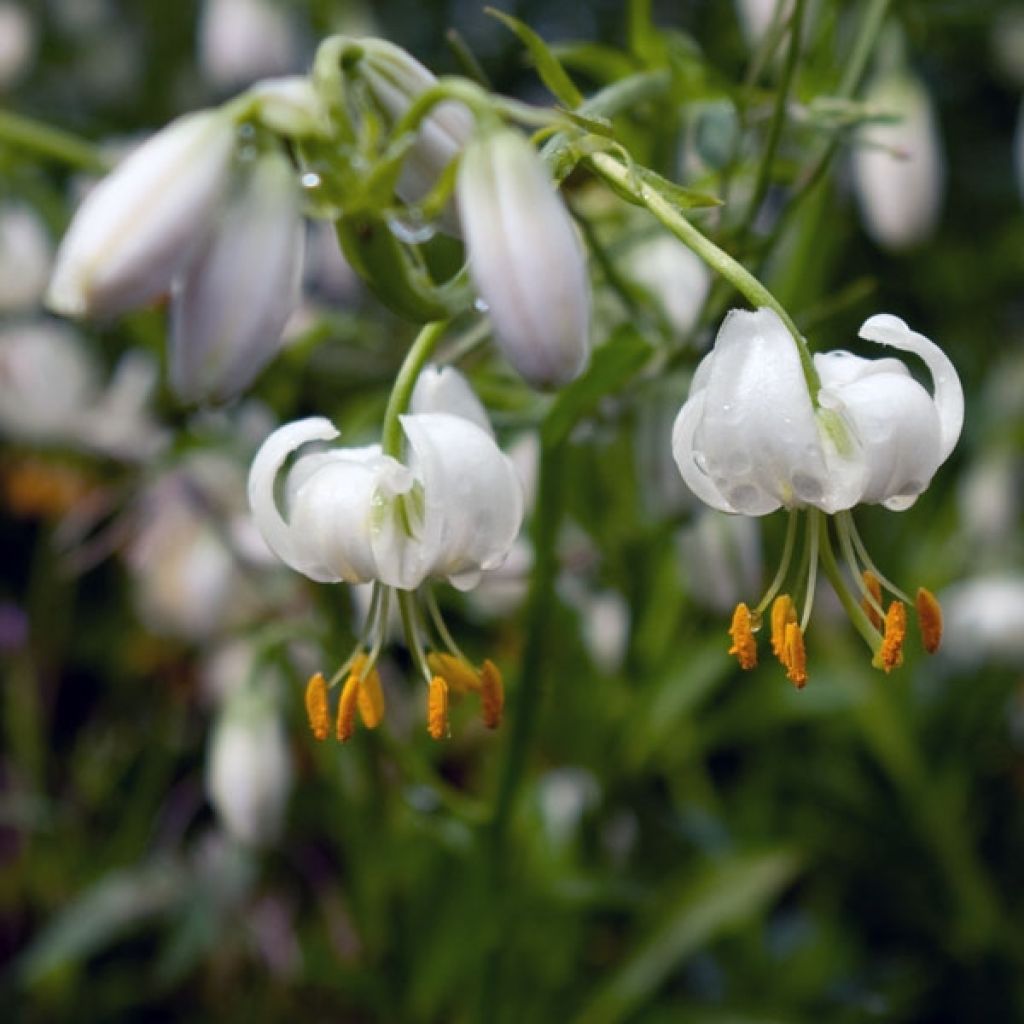

Lis Botanique Martagon Album
Lilium martagon var. album
Lilium martagon var. album var. album
White Martagon Lily, White Turk's Cap Lily
This plant carries a 6 months recovery warranty
More information
We guarantee the quality of our plants for a full growing cycle, and will replace at our expense any plant that fails to recover under normal climatic and planting conditions.
From €5.90 for pickup delivery and €6.90 for home delivery
Express home delivery from €8.90.
Does this plant fit my garden?
Set up your Plantfit profile →
Description
The white Turk's cap lily is a natural variety of Lilium martagon, highly sought after by enthusiasts of unusual plants, and protected in the wild. It produces immaculate white flowers with a curious turban-like shape, both wild and delicate. Its flowers, with their unique fragrance, appear on tall stems in long clusters. It is a great addition to wild gardens or large flowerbeds. It doesn't mind limestone and is hardy and resistant.
Lilium martagon var. album belongs to the Liliaceae family. Although rare, it has a wide distribution range, extending from Europe to the northern regions of Asia Minor and eastwards to Mongolia. It is a bulbous, deciduous perennial plant and this species can reach 150 cm (59in) high when in bloom, with a spread of 45 cm (18in). The flowering period is from June to August, depending on the climate. Numerous pure white flowers bloom along the stems, emitting a sweet scent in the evening. Curved petals and long orange stamens emerge from these astonishing lanterns. They are visited at night by butterflies such as the Hummingbird Hawk-Moth (Macroglossum stellatarum), which hover in front of the flower, like hummingbirds. The foliage is light green, with spatulate leaves.
You can grow these lilies with non-invasive perennial plants as they prefer to have their feet in the shade, and the other plants will help prevent the stems from bending in the wind. This lily is ideal for borders, cool rockeries, and of course, bouquets. It is a quintessential botanical lily, one of those exceptional plants that every collector likes to have in their garden. Picking it is strictly prohibited in the wild. It has given rise to a line of equally remarkable hybrids.
Report an error about the product description
Lilium martagon var. album in pictures


Plant habit
Flowering
Foliage
Botanical data
Lilium
martagon var. album
var. album
Liliaceae
White Martagon Lily, White Turk's Cap Lily
Alps
Other Botanical Lilies
Planting and care
Plant your white martagon lilies in a semi-shady or non-scorching sun location, they do not mind limestone soils but poorly drained and heavy soils are a real problem, especially during their dormancy. Ensure good drainage by lightening your planting substrates with sand and gravel, a rocky soil will be perfect. Lilies often have red lily beetles on their foliage which are merciless pests. Collect them as soon as you see them, be careful because they will drop as soon as you touch them. You can plant your martagon lilies in pots to enjoy them as close to your house as possible, on your terrace for example.
Planting period
Intended location
Care
-
, onOrder confirmed
Reply from on Promesse de fleurs
Hardy summer bulbs
Haven't found what you were looking for?
Hardiness is the lowest winter temperature a plant can endure without suffering serious damage or even dying. However, hardiness is affected by location (a sheltered area, such as a patio), protection (winter cover) and soil type (hardiness is improved by well-drained soil).

Photo Sharing Terms & Conditions
In order to encourage gardeners to interact and share their experiences, Promesse de fleurs offers various media enabling content to be uploaded onto its Site - in particular via the ‘Photo sharing’ module.
The User agrees to refrain from:
- Posting any content that is illegal, prejudicial, insulting, racist, inciteful to hatred, revisionist, contrary to public decency, that infringes on privacy or on the privacy rights of third parties, in particular the publicity rights of persons and goods, intellectual property rights, or the right to privacy.
- Submitting content on behalf of a third party;
- Impersonate the identity of a third party and/or publish any personal information about a third party;
In general, the User undertakes to refrain from any unethical behaviour.
All Content (in particular text, comments, files, images, photos, videos, creative works, etc.), which may be subject to property or intellectual property rights, image or other private rights, shall remain the property of the User, subject to the limited rights granted by the terms of the licence granted by Promesse de fleurs as stated below. Users are at liberty to publish or not to publish such Content on the Site, notably via the ‘Photo Sharing’ facility, and accept that this Content shall be made public and freely accessible, notably on the Internet.
Users further acknowledge, undertake to have ,and guarantee that they hold all necessary rights and permissions to publish such material on the Site, in particular with regard to the legislation in force pertaining to any privacy, property, intellectual property, image, or contractual rights, or rights of any other nature. By publishing such Content on the Site, Users acknowledge accepting full liability as publishers of the Content within the meaning of the law, and grant Promesse de fleurs, free of charge, an inclusive, worldwide licence for the said Content for the entire duration of its publication, including all reproduction, representation, up/downloading, displaying, performing, transmission, and storage rights.
Users also grant permission for their name to be linked to the Content and accept that this link may not always be made available.
By engaging in posting material, Users consent to their Content becoming automatically accessible on the Internet, in particular on other sites and/or blogs and/or web pages of the Promesse de fleurs site, including in particular social pages and the Promesse de fleurs catalogue.
Users may secure the removal of entrusted content free of charge by issuing a simple request via our contact form.
The flowering period indicated on our website applies to countries and regions located in USDA zone 8 (France, the United Kingdom, Ireland, the Netherlands, etc.)
It will vary according to where you live:
- In zones 9 to 10 (Italy, Spain, Greece, etc.), flowering will occur about 2 to 4 weeks earlier.
- In zones 6 to 7 (Germany, Poland, Slovenia, and lower mountainous regions), flowering will be delayed by 2 to 3 weeks.
- In zone 5 (Central Europe, Scandinavia), blooming will be delayed by 3 to 5 weeks.
In temperate climates, pruning of spring-flowering shrubs (forsythia, spireas, etc.) should be done just after flowering.
Pruning of summer-flowering shrubs (Indian Lilac, Perovskia, etc.) can be done in winter or spring.
In cold regions as well as with frost-sensitive plants, avoid pruning too early when severe frosts may still occur.
The planting period indicated on our website applies to countries and regions located in USDA zone 8 (France, United Kingdom, Ireland, Netherlands).
It will vary according to where you live:
- In Mediterranean zones (Marseille, Madrid, Milan, etc.), autumn and winter are the best planting periods.
- In continental zones (Strasbourg, Munich, Vienna, etc.), delay planting by 2 to 3 weeks in spring and bring it forward by 2 to 4 weeks in autumn.
- In mountainous regions (the Alps, Pyrenees, Carpathians, etc.), it is best to plant in late spring (May-June) or late summer (August-September).
The harvesting period indicated on our website applies to countries and regions in USDA zone 8 (France, England, Ireland, the Netherlands).
In colder areas (Scandinavia, Poland, Austria...) fruit and vegetable harvests are likely to be delayed by 3-4 weeks.
In warmer areas (Italy, Spain, Greece, etc.), harvesting will probably take place earlier, depending on weather conditions.
The sowing periods indicated on our website apply to countries and regions within USDA Zone 8 (France, UK, Ireland, Netherlands).
In colder areas (Scandinavia, Poland, Austria...), delay any outdoor sowing by 3-4 weeks, or sow under glass.
In warmer climes (Italy, Spain, Greece, etc.), bring outdoor sowing forward by a few weeks.

































